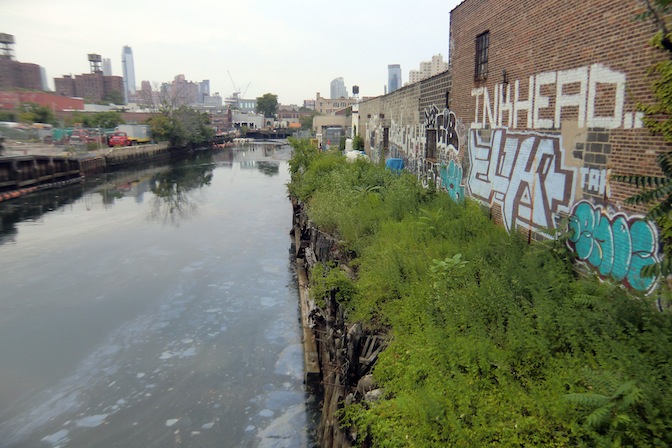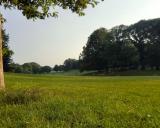People + Views > Bloggers
July 28, 2014
Letters from New York #02: Where the wild things are
Philipp Frener
New York has a sheer endless number of green spaces and facilities for recreation. The New York City Department of Parks & Recreation puts their number, from small swimming pools and skating rinks to extensive wetlands and woodlands, at 1,700. This number is set to grow as New York’s new mayor Bill de Blasio has professed to continue a policy initiated by his predecessors Rudolph Giuliani and Mike Bloomberg that sees the gradual transformation of disused industrial parks into green and recreational spaces.
Among the most prominent, and certainly most expensive, greening projects is the environmental cleanup of the Gowanus Canal. Once a busy cargo transportation hub in Brooklyn’s Red Hook and Gowanus neighborhoods, the canal is now recognized as one of the most heavily polluted bodies of water in the United States. Unsurprisingly, because of that, it is not entirely clear how the cleanup is going to proceed; nor is it clear how much it is going to cost. According to Village Voice, whichever cleanup plan will ultimately be implemented, costs of several hundred million dollars, to be spent over a decade, are to be expected.
Not all parks in New York are city-owned. A series of parks on Manhattan’s southern tip are run by the non-profit organization Battery Park City Conservancy. The extensive wetlands in Jamaica Bay are, for the most part, under federal oversight. And seven parks in New York are administered by the State of New York. Located in Hunters Point, Gantry Plaza State Park is such a state park. It is part of an extensive transformation of Queens’ westernmost neighborhood noted for its rapid gentrification. Hunters Point has now one of the highest concentrations of art galleries, art institutions, and studio spaces in the city, most prominently the never disappointing MoMA PS1.
Located in Hunters Point, Gantry Plaza State Park is such a state park. It is part of an extensive transformation of Queens’ westernmost neighborhood noted for its rapid gentrification. Hunters Point has now one of the highest concentrations of art galleries, art institutions, and studio spaces in the city, most prominently the never disappointing MoMA PS1.
Gantry Park straddles the banks of the East River and offers stunning views of Manhattan’s skyline with the United Nations Headquarters at the center of the panorama. The 4ha large park was first opened in 1998 and expanded in 2009. The park is a bit of an ongoing project: once completed, the park will be four times its present size. Designed by New York architect Abel Bainsson Butz, the park offers a range of recreational facilities that cater to the needs of the neighborhood’s 21st century middle-class urbanites: benches, chairs and even hammocks are embedded in or near green spaces, wooden boardwalks, and playgrounds. Some of the chairs are intimately hidden behind tall grass. It is a park where an industrial past meets postindustrial expectations. It is also a place that makes one wonder why other cities have such a hard time investing meaningfully in green spaces.


















Comments